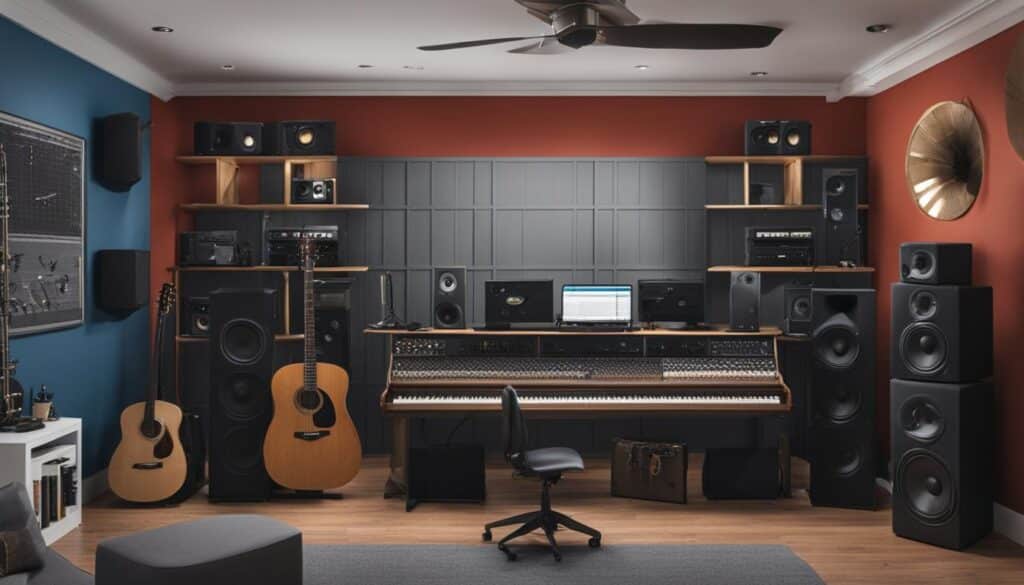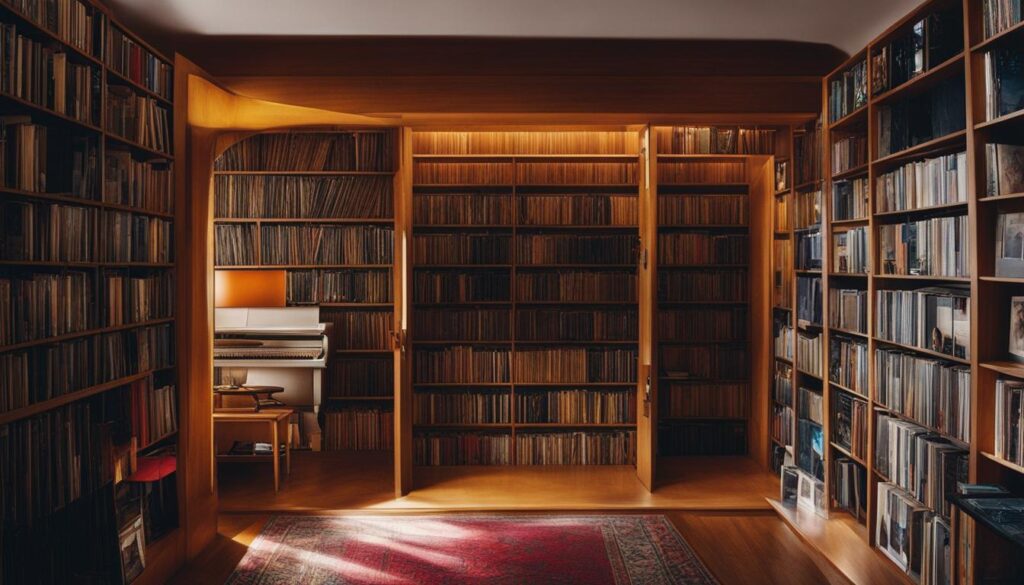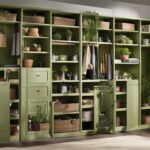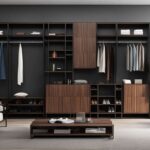Looking to create the perfect music room or space in your home? A closet bookshelf for your music collection can be a game-changer. Not only does it provide a practical storage solution for your instruments, books, and decor, but it also helps keep your space organized and stylish. By utilizing the compact and space-saving design of a closet bookshelf, you can transform any unused area into a functional and visually appealing music room. With creative storage options and stylish organization, you can create a music space that is both practical and inspiring. Whether you have a dedicated room or a small nook, a closet bookshelf is a versatile and efficient way to store and display your music collection.
Table of Contents
Key Takeaways:
- A closet bookshelf is a practical and stylish storage solution for your music collection.
- Utilizing a closet bookshelf helps keep your space organized and visually appealing.
- Creative storage options and stylish organization can transform any unused area into a functional music room.
- A closet bookshelf is a versatile and efficient way to store and display your music collection.
- Whether you have a dedicated room or a small nook, a closet bookshelf can meet your storage needs.
Soundproofing and Acoustics: Creating the Perfect Music Studio
When it comes to creating the perfect music studio, two key factors to consider are soundproofing and acoustics. These elements play a crucial role in ensuring that your studio space provides optimal sound quality and minimizes any disruptive noise. By taking the time to address soundproofing and acoustics, you can create an environment that is conducive to recording, practicing, and enjoying music.
One effective method of soundproofing your music studio is by using acoustic foam. This specialized foam is designed to absorb sound waves and reduce echo, creating a more controlled and intimate sound environment. Another option is to add extra layers of drywall to your walls, which helps to block out external noise and vibrations. Additionally, incorporating soundproofing materials into your studio, such as curtains or panels, can further improve the overall sound quality and reduce any sound leakage.
Alongside soundproofing, optimal acoustics are also essential in creating the perfect music studio. Exposed brick walls are a popular choice for both their aesthetic appeal and their ability to enhance the acoustics of a space. The textured surface of the bricks helps to diffuse sound waves, resulting in a warmer and more natural sound. To maximize the functionality of your studio, consider incorporating sturdy shelving for storage, room dividers to separate different areas, and a variety of lighting options to provide the ideal ambiance for your music sessions.
Furthermore, integrating your instruments as decor can add a touch of personalization to your music studio. Displaying instruments on the walls not only adds visual interest but also serves as a practical storage solution. Rugs and plants can be utilized to both absorb sound and create a cozy and inviting atmosphere. Comfy seating options and bright colors can contribute to a comfortable and inspiring environment, while a dedicated piano room can be designed to exude elegance and sophistication. By carefully considering soundproofing and acoustics, you can create a music studio that is tailored to your needs and enhances your musical experience.

Suggested Lighting Options
| Lighting Type | Description |
|---|---|
| Overhead Lighting | Provides general illumination for the entire space. |
| Wall Sconces | Adds a stylish and focused light source for reading sheet music or playing instruments. |
| Spotlights | Highlights specific areas or instruments in the studio. |
| Floor Lamps | Creates a warm and inviting ambiance while providing additional task lighting. |
Creating a Personalized and Functional Music Room
Designing a music room that is both personalized and functional is essential for any music enthusiast. Whether you have a dedicated space or a multi-purpose room, there are several key elements to consider.
Start by incorporating vintage instruments as decor to showcase your love for music and add a unique touch to the room. These instruments not only serve as eye-catching pieces but also create a sense of nostalgia and personal connection to your musical journey.
Storage is a crucial aspect of any music room. Open cubbies or shelves provide an organized and clutter-free solution for instrument storage, sheet music, and accessories. By keeping everything within reach, you can stay focused on your music without any distractions.
Enhance the aesthetics of your music room by incorporating art and accessories that inspire and motivate you. Music-themed prints, posters, or even your own awards are great additions that reflect your passion for music. Consider creating a gallery wall to display your favorite photographs, concert tickets, or memorable moments from your musical journey.
Create a dedicated listening area within your music room for a cozy and immersive musical experience. Invest in high-quality audio equipment or a record player and set up comfortable seating where you can relax and enjoy your favorite tunes. Good lighting is crucial in a music room, especially when reading sheet music. Mix and match fixtures to ensure sufficient brightness throughout the space.
If you have limited space, don’t worry! You can still create a small music nook in a corner or even in an unused closet. By utilizing every inch of available space, you can create a secluded area where you can focus on your music without distractions. Make sure to prioritize comfort by adding cozy seating options or even a bed for relaxation and unwinding after a practice session.
Ultimately, your music room should reflect your personal style and create an environment that inspires and facilitates your musical pursuits. From vintage instruments and storage solutions to art and accessories, each element contributes to a personalized and functional space where you can explore, create, and immerse yourself in the world of music.
FAQ
How can a closet bookshelf transform my music space?
A closet bookshelf provides a practical storage solution for your instruments, books, and decor, helping to keep your space organized and stylish.
What are some soundproofing and acoustics considerations for a music studio?
Start by soundproofing the space to eliminate echo and manage sound levels. This can be done with acoustic foam, extra drywall, or other soundproofing methods. Investing in a drum shield or cage can enhance acoustics for a home recording studio or practice space. Exposed brick walls are a great option for both soundproofing and adding an urban feel.
How can I create ample storage for instruments and music decor in a music studio?
Incorporate sturdy shelving to create ample storage. Room dividers can help create separation in a multi-purpose space. Displaying instruments on the walls can serve as trendy and functional storage.
What are some lighting options for a music room?
Embrace stylish lighting options, such as wall sconces and overhead lighting, to ensure visibility while playing or reading sheet music.
How can I personalize my music room?
Personalize your music room by incorporating vintage instruments as decor, art and accessories that inspire you, and framed sheet music or album covers. Create a separate listening area and prioritize good lighting.


